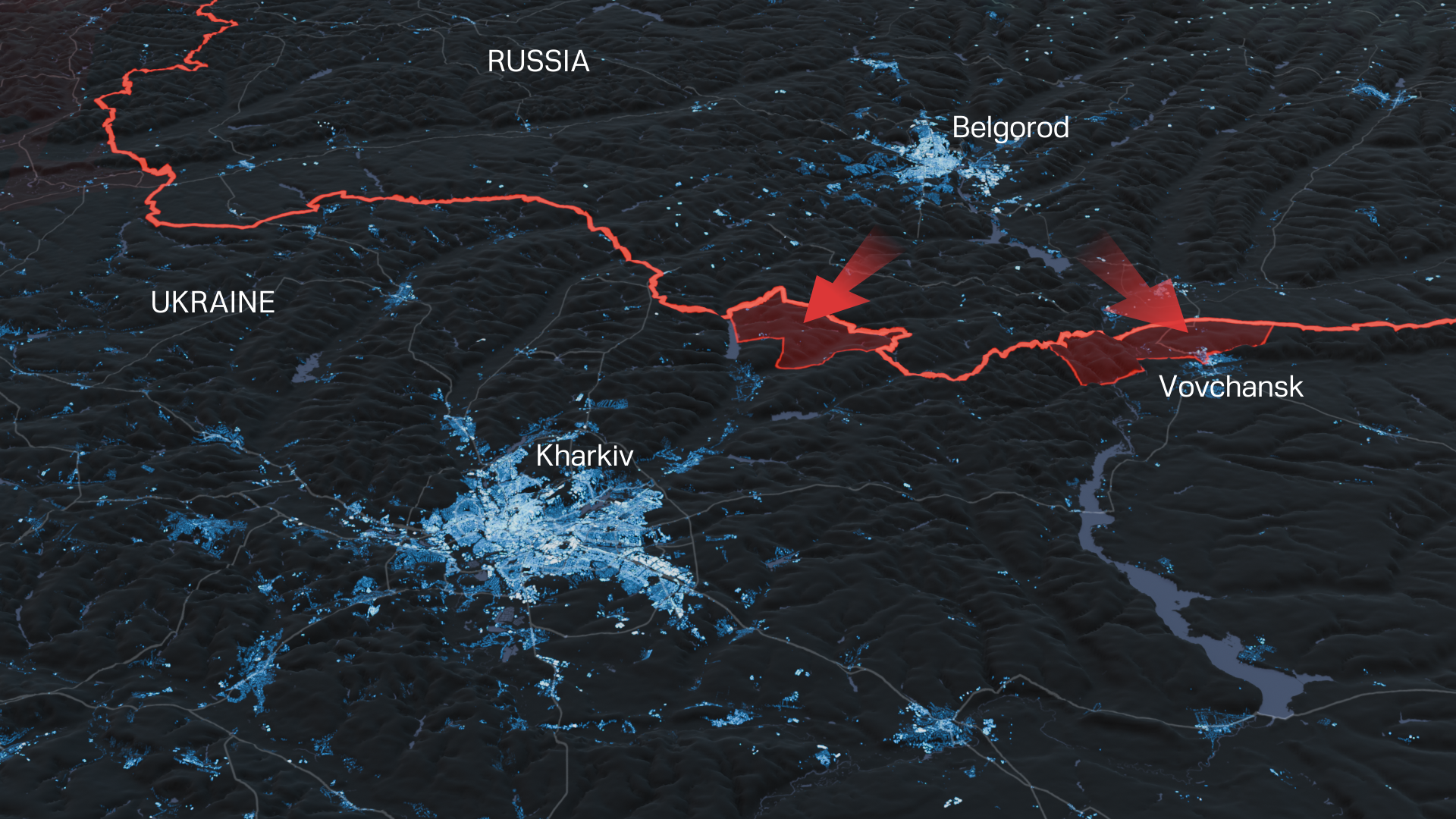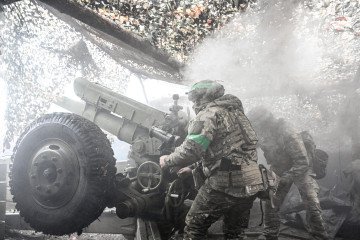- Category
- War in Ukraine
What Impact Has Ukraine Striking Back Inside Russia Had on the Kharkiv Offensive?

Western allies have finally untied Ukrainian hands, allowing them to strike within enemy airspace. Russia’s military targets in the rear are burning. Why was this latest policy vital for Ukraine, and did the previous restrictions provide Russia with the sanctuary it needed for its recent escalation?
At the end of May 2024, Western allies untied Ukrainian hands by lifting restrictions on the use of their weapons against military targets on Russian territory.
Though well received, the decision—that also comes with limitations—seems to have been a retaliation to Putin’s recent large-scale offensive in the Kharkiv region rather than a preemptive measure.
Since the West started supplying the country with armaments, Ukraine has pleaded for permission to strike beyond its borders, arguing that eliminating the source of attacks against its territory would hugely reduce Russia’s threat against the country. But it was faced with constant pushback—until now.
Since the recent policy change, Ukraine has already been able to penetrate into enemy airspace—and Russia is feeling the heat. Their military targets in the rear have started burning.
But did the previous restrictions provide a gateway for Russia’s recent escalation? What will the new policy mean for Ukraine, and what do they need to change the status of this war?
What pushed the policy change?
In the early hours of May 10th, Russian forces stormed the Kharkiv border with ground troops, warplanes, drones, and artillery, attempting to open up a new front.
Over the course of the new offensive, Russia occupied several villages across the region and destroyed them. The town of Vovchansk—just 5km inside Ukraine—became a battlefield and was wiped out. This meant that Kharkiv, Ukraine’s second-largest city with a pre-war population of around 1,5 million people, was under threat of seizure.
Kharkiv is just 30km (18m) from the Russian border, making it one of the most exposed cities in Ukraine. It has been victim to relentless missile and glide bomb attacks, which are destroying urban areas and energy infrastructure.
Russia’s sanctuary, a gateway for escalation
Russia’s preparations for the new offensive were carried out right in front of the eyes of Ukraine, but they had their hands tied behind their backs. “The US missed an opportunity to deter Russian preparations for offensive operations across the border into northern Ukraine,” said the Institute for the Study of War (ISW).
The restrictions had effectively created a vast military sanctuary for Russia, enabling them to amass ground force from which its launching its glide bombs and other long-range strike systems found ISW.
However, this doesn’t necessarily mean that Vovchansk would have been completely protected from the invasion. But, should the restrictions have been lifted earlier, or none have been placed at all, American missiles could have targeted and destroyed Russia’s missile systems driving them further away from the front, protecting Kharkiv from the bombardment of S-300 S-400 attacks it’s faced since the beginning of March 2024.
The attacks have been relentless; a kindergarten building and a residential home were hit, injuring 7, and a residential building and emergency services were also hit killing 3 and wounding 25. Russian forces dropped more than 20 glide bombs against Vovchansk on May 11 alone, claimed ISW, and the list goes on.
Maria Avdeeva, a Ukrainian security expert noted that since the start of March Russian propaganda escalated—specifically targeting the region. This could have been in the hopes of driving people out clearing their path, giving Russia what Putin called a “safe zone” to hold stronger positions in the area.
What can Ukraine strike with?
The slow response in lifting restrictions left Kharkiv paying a huge price. However, even under these conditions, Ukrainian forces prevailed, and Russia failed to make further significant gains.
Anton Andreev, a Russian soldier from the fifth company of the 1009th regiment, said that his unit had been decimated, with only 12 of 100 soldiers remaining. “They just chop us up. We are sent under machine guns, under drones in daylight, like meat.”
Ukraine has also begun to strike Russian military targets inside Russia. An air-defense position in the city of Belgorod equipped with S-300 / S-400 missiles burned.
Some key weapons we’re likely to see igniting Russian military targets are:
American M777 Howitzer: 24km range or up to 40km with Smart Excalibur Munitions
Slovak Zuzana and German self-propelled Howitzer PzH-2000: 40km range
The French Caesar: 46km range
The Swedish Archer: 60km range
However, HIMARS has a strong chance of becoming the headliner with its GMLRS missiles, which have a striking range of 80km.
Ground-launched small-diameter bombs (GLSDB) proved ineffective as they were downed by Russian jammers. Instead, the less-known small-diameter glide bomb, GBU-39, hit almost 90% of targets. It’s also been adapted for ground use in HIMARS launchers, a development the Pentagon representatives say will increase the range of rocket artillery.
Although this is a huge step with no doubt positive gains for Ukraine, the latest policy has limitations.
What limitations does the new policy have?
The USA has not allowed Ukraine to use long-range ATACMS within Russian territory. It has only allowed its use in temporarily occupied Ukrainian territory and originally stated that they were only allowing Ukraine to use its weapons “for counter-fire purposes in Kharkiv,” Though last Tuesday, National Security Adviser Jake Sullivan told PBS that “it extends to anywhere that Russian forces are coming across the border from the Russian side to the Ukrainian side to try to take additional Ukrainian territory.”
ATACMS have been successful in striking Russian military targets within occupied regions, such as the base in Belbek, Crimea, May 2024, where a radar and two launchers from an S-400 air-defense battery were destroyed along with damaging four warplanes. Last week, Ukrainian forces again rained ATACMS on Belbek S-400 as well as another two air-defense batteries of S-400 and S-300.
The Ukrainian Center for Defense Strategies reported that “at least 10 ATACMS missiles were used in the strike,” with the Russian air defense system failing to intercept any of them.
The Russian air force has more than 50 S-400 batteries, according to Forbes, but they’re useless in Russia’s war against Ukraine if they can’t survive ATACMS attacks. The US limitations are stalling what could quickly change the war's current status.
The ISW was critical of the newly lifted restrictions, saying that Biden's limited policy “removed a maximum of 16 percent of Russia’s ground sanctuary and still preserves at least 84 percent of Russia's ground sanctuary—territory within range of Ukrainian ATACMS.”
The UK and France, which were the first to lift restrictions, did not directly prohibit Ukraine from using its air-to-surface Storm Shadow or Scalp missiles, which have a range of 250 to 290 km.
Denmark’s Foreign Minister Lars Lokke Rasmussen said that there were no restrictions on the use of F-16 fighter jets, and Netherlands Defence Minister Kajsa Ollongren had a similar message: “Once we hand it over to Ukraine, it’s theirs to use.”
Yesterday, June 20th, Russia reportedly dropped the first FAB-3000 M-54 UMPK (unified gliding and correction module), which has a 3-ton heavy bomb—1.2 tons warhead—on Lyptsy, Kharkiv region. This is the first time a bomb of this size has been recorded.
The best way to deter these attacks is to eliminate their aircraft carriers, as the bombs are difficult to intercept. “It’s extremely important to get Western fighters that will allow us to strike the aircraft carrying these kinds of bombs much earlier, and receiving Western long-range air-to-air missiles will make it possible to drive away enemy aircraft from the front-line zone,” said Oleh Katkov of Defense Express.
Even with limitations in the latest policy, Russian attempts to further advance in the Kharkiv direction have been unsuccessful. A NATO official, speaking anonymously, has described Russia’s losses during its advance as “astronomical.” According to the official, Russian forces suffered approximately 1,000 fatalities per day during this period.
US General Charles Brown, Chairman of the Joint Chiefs of Staff, attributed this stability in part to the US authorization to strike with American weaponry, a move deemed “very, very beneficial for Ukrainians in the future.”
-46f6afa2f66d31ff3df8ea1a8f5524ec.jpg)
-531fe8d92c87f1630d3f1a2503c33089.png)


-29a1a43aba23f9bb779a1ac8b98d2121.jpeg)
-886b3bf9b784dd9e80ce2881d3289ad8.png)


-f88628fa403b11af0b72ec7b062ce954.jpeg)